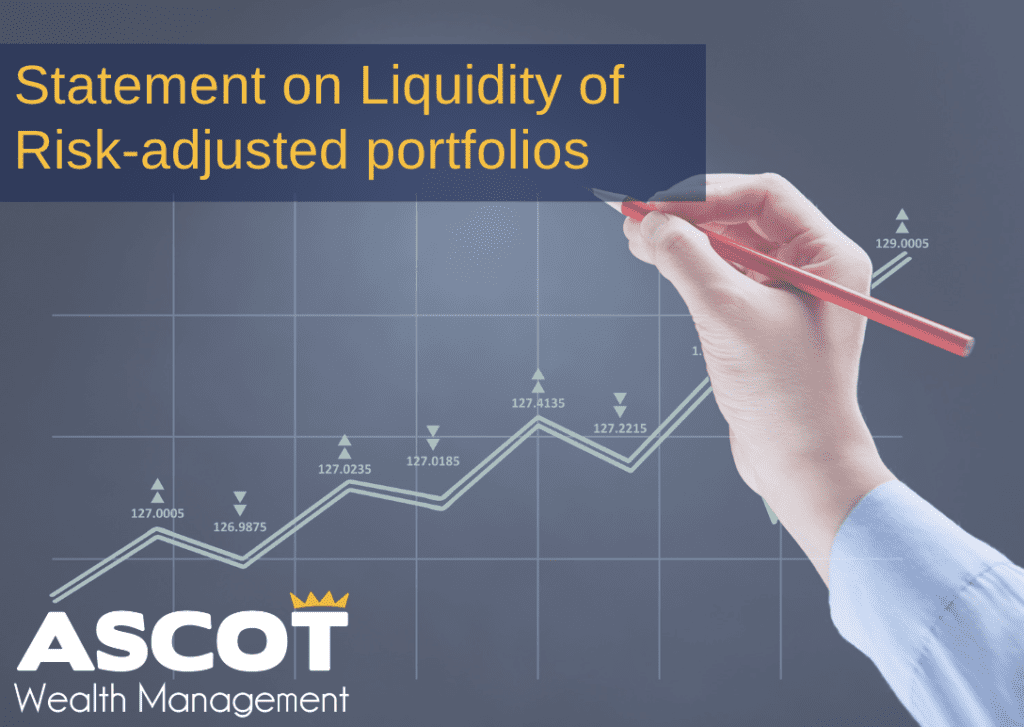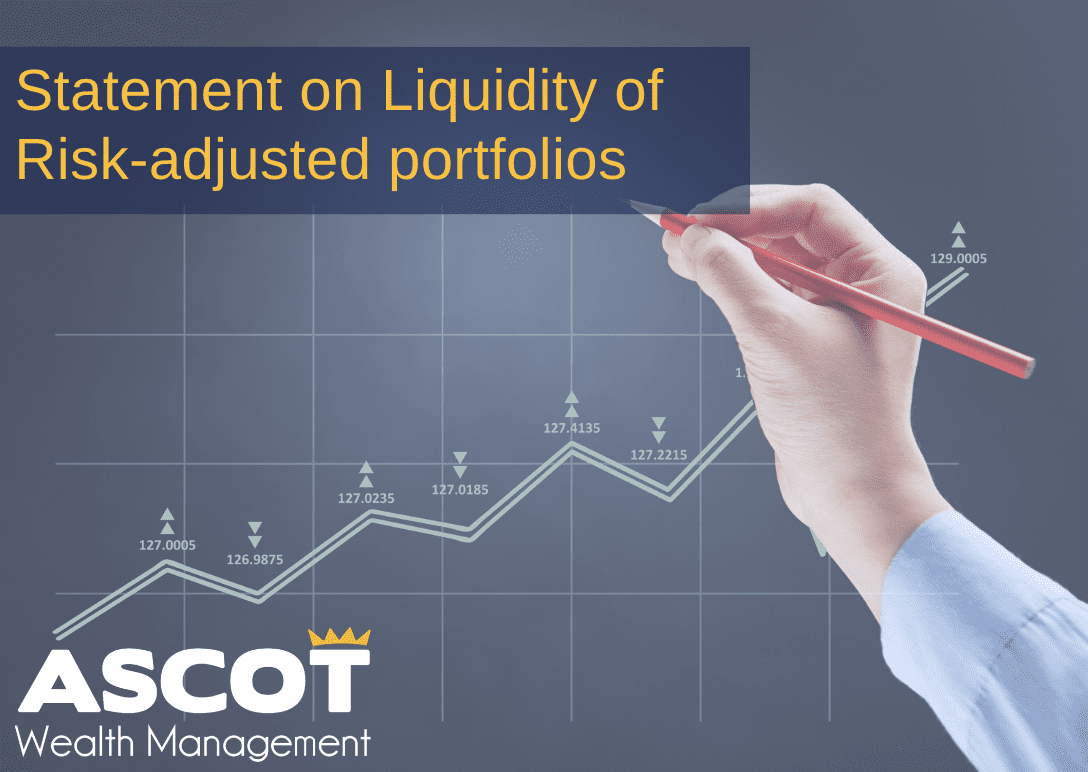Statement on Liquidity of Risk-adjusted portfolios

The recent suspension of the Woodford Equity Income Fund (WEIF) amidst a torrent of investor withdrawals (most notably Kent County Council £263m (Financial Times, 2019)) brought to light that the fund was not as liquid as the “open-ended” term in the title of the universe in which it exists would infer.
As folklore will one day tell, it turned out that the fund had been investing in less frequently traded unquoted private stocks which ultimately have less liquidity than their listed peers but offer potentially higher returns to reward the additional investment risk. To invest in a private company an investor often has to overcome a multitude of difficulties such as increased due diligence, selecting an appropriate valuation method for pricing company stocks, less ease of access to company financial statements and it is also not uncommon for there to be liquidity clauses for investors in private companies looking to offload their investment be it to another investor or a secondary market at listing. The final point is compounded in loss-making companies where an investor looking to offload the stock may find themselves in competition with the company itself which might be looking to raise capital by issuing new shares (Jourdan, 2019). However, the WEIF had c. £3.5billion assets under management (AUM) (Financial Times, 2019) bringing in more than adequate fund manager fees to absorb any additional costs associated with unquoted investments. The problems only started after a period of rocky performance persisted long enough to trigger a mass investor exodus from the fund.
When a fund is inundated with more withdrawal requests than available funds the manager is forced into what is termed a “fire sale” which is effectively selling off stocks as quickly as possible without concern for timing or pricing (liquidity at any cost). In thinly traded stocks a large selloff by exiting investors can have the effect of exerting downwards pressure on the stock price leaving the remaining investors worse off. As such the fund manager can effectively “block” investors from withdrawing whilst they build up liquidity by orderly selling which is essentially where the Woodford Fund is now (Jolly & Jones, 2019). The fund is required to review the decision to suspend trading every 28 days and WEIF’s authorised corporate director has recently informed the Financial Conduct Authority that the fund is not yet ready to be re-opened effectively starting another 28 day cycle ( (Financial Times, 2019).
We recently underwent a liquidity assessment exercise for the funds we hold to assess the current turnaround time for sell down out of a fund’s underlying assets in a fire sale scenario:
The method we used to measure liquidity was to separate net asset value (NAV) into four time buckets based on proportion of assets the fund manager would reasonably expect to be able to sell in that time period given normal market conditions (as per method used by the FCA Chief Executive in his letter to the Chief of the Treasury Committee (Bailey, 2019)). We sent this breakdown to each of our mutual fund providers and collated the results to assess the impact on our portfolios.


*Property Feeder Funds could not reliably supply data due to the naturally illiquid nature of direct investments in real estate, for the purposes of this exercise we designated these as 25% Bucket 3 and 75% Bucket 4. Vanguard with whom we hold a index tracker funds was inundated by requests for this data from several investors and financial advisors alike and are at the time of this writing working on a uniform response to go out to all their investors in the near future. We therefore excluded Vanguard funds in the AWM Fund Liquidity Profile above. Inclusion of these index trackers funds would most likely increase the weighting of Buckets 1 and 2 as holdings normally have to satisfy strict set of criteria which may include market cap, trading volume, credit rating etc before they become eligible for edition to the index which increases liquidity.
** Source: (Bailey, 2019)

On average, the current AWM Fund universe has an average 79.33% weighting in Bucket 1 (1-7days) which is 58.33% higher than the WEIF did at its higher Bucket 1 assessment date 30th June 2018. In Figure 1 above, there is an observable 13% reduction of Bucket 1 weighting for the WEIF across the timescale described by the FCA which has been distributed across less liquid Buckets 2 to 4. As at 30 April 2019 observation the WEIF fund Bucket 1 weighting is only 2% higher than current AWM average Bucket 4 weighting of 6%.
Whilst the WEIF decision to hold unquoted securities in its portfolio was within the regulator’s mandate, our research has not indicated any evidence to suggest similar trends developing in any of the mutual funds we currently hold. More so, we anticipate that development of such a trend is especially less likely given an environment of concurrently peaked investor and regulatory liquidity vigilance. The key takeaways from this is that even fund managers who have performed well in the past may (and are likely to) run into unfavourable periods of performance in the future which may result in loss of investor confidence. We maintain our stance that a diversified portfolio is the most appropriate solution as this will often act to limit downside exposure specific to any one mutual fund in times such as these.
We continue to closely monitor these and other developments that influence the performance of the portfolios on an ongoing basis.
Prepared by: Shingirai Makuwaza, Investment Analyst, July 5, 2019
Bibliography
Bailey, A. (2019, June 18). Letter from FCA Chief Executive to Chair re Woodford 180619. Letter from FCA Chief Executive to Chair re Woodford 180619 . London, London, United Kingdom: Financial Conduct Authority.
Financial Times. (2019, July 2). Financial Times. Retrieved July 4, 2019, from Financial Times: https://www.ft.com/content/7cba76c4-9c1f-11e9-b8ce-8b459ed04726
Jolly, J., & Jones, R. (2019, July 1). The Guardian. Retrieved July 4, 2019, from The Guardian: https://www.theguardian.com/business/2019/jul/01/block-on-withdrawals-from-neil-woodford-fund-extended
Jourdan, P. (2019, June 20). Amati Global Investors. Retrieved July 4, 2019, from Amati Global Investors: http://amatiglobal.com/press.php?date=20190620




